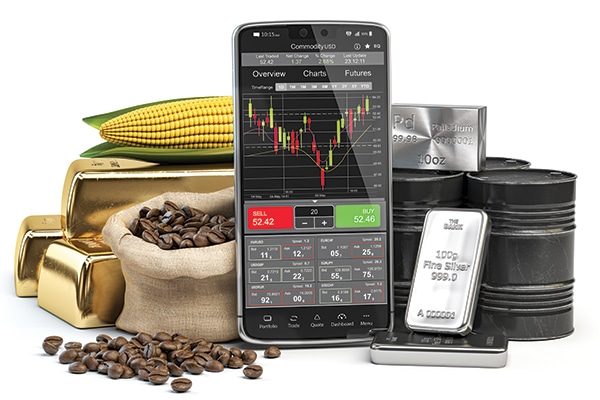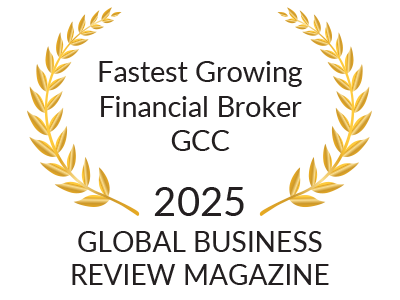Commodities are the backbone of the global economy. Consider gold, oil, coffee, and wheat as raw resources that drive industries and influence our daily lives. But did you know they can also be a great way to grow your wealth?
For many investors, trading commodities is a popular option. Why? It provides the opportunity to diversify your portfolio, high liquidity, and intriguing chances. If you understand how to play the game, you can always make money regardless of price changes.
We will answer all your queries in this article. You will discover the technical details of commodities, their value as investments, and how to trade them like a pro. Additionally, we will offer helpful suggestions and techniques to assist you trade more intelligently rather than more forcefully.
Ready to explore the exciting world of commodities? Let’s dive in and uncover how you can turn raw materials into real profits!
What Are Commodities?
Commodities are primary goods or raw materials that are the foundation of the world economy. They are vital to industries and daily life since they are physical assets that are utilized to produce other goods and services.
Because these products are standardized, their quality is constant regardless of their origin. For instance, South African and Canadian gold are nearly identical. Commodities are easily traded on international marketplaces because of their uniformity.
Because they are constantly in demand, commodities are essential to the economy. However, due to supply, demand, and world events, their prices might fluctuate greatly. For example, a drought may impact wheat prices, and geopolitical crises can affect the oil industry.
Types of Commodities
Commodities are divided into two main types. Each plays a vital role in global trade and serves as a foundation for various industries:
Hard Commodities: Extracted from the Earth
Natural resources that are harvested, drilled, or mined are known as hard commodities. They consist of energy resources like coal, natural gas, and crude oil, as well as metals like copper, silver, and gold. These materials provide the foundation of construction, manufacturing, and energy generation. Particularly in uncertain economic times, hard commodities are frequently regarded as a dependable investment.
Soft Commodities: Grown from the Ground
Soft commodities come from agriculture. They consist of goods like coffee, cotton and cocoa, as well as crops like corn, wheat and sugar. Livestock, such as cattle and hogs, also fall into this category. These commodities are crucial for global food supply and textile production. Because they rely on farming, soft commodities are highly influenced by weather conditions, seasonal patterns, and global demand.
Commodities Key Markets
Commodities are often traded in two key ways:
Spot Market: Immediate Buying and Selling
In the spot market, commodities are bought and sold for immediate delivery. The transaction happens “on the spot,” with prices reflecting the current market value. This method is standard for physical commodities like gold, oil, or agricultural goods. It’s straightforward and works well for traders who want to take possession of the commodity right away.
Futures Market: Trading for Future Delivery
The futures market involves contracts to buy or sell a commodity at a set price on a future date. These contracts don’t require immediate delivery, making them ideal for speculation and hedging. Futures trading is popular with investors who want to profit from price movements without handling the physical goods. It’s widely used for commodities like crude oil, natural gas, and grains.
How to Trade Commodities Profitably
Trading commodities can be a rewarding endeavor, but it requires strategy, knowledge, and careful planning. Here is how to navigate the market and increase your chances of success.
Choose Your Trading Method
To trade commodities profitably, you first need to choose the correct trading method. There are several ways to trade commodities, each with its advantages.
- Spot Trading: Ideal for those who want to take physical possession of the commodity.
- Futures Contracts: Best for traders who want to speculate on price movements without owning the actual commodity.
- Commodity ETFs and Stocks: Great for those looking for indirect exposure to commodity prices through related companies or funds.
Understand the Factors That Influence Commodity Prices
Commodity prices are primarily influenced by supply and demand, with various factors driving price fluctuations. Here’s what you need to know:
- Macroeconomics: The status of the economy significantly influences the demand for commodities. While a thriving economy may result in higher demand and higher prices, a poor economy usually lessens the need for commodities related to transportation and building.
- Competition: The demand for outdated commodities may decline if new products or technology arise. For example, the demand for petrol and oil has decreased as renewable energy has grown.
- Politics: Political events and policy can directly impact commodity prices. Price increases may result from modifications to import or export laws, such as higher tariffs.
- Currency Fluctuations: Commodity prices are often traded in U.S. dollars, so fluctuations in the value of the dollar can impact commodity prices. A weaker dollar makes commodities cheaper for foreign buyers, potentially increasing demand and driving up prices.
- Technological Advances: Innovation and advancements in technology can affect commodity production and consumption. For example, improvements in mining techniques can increase the supply of metals, while breakthroughs in energy technologies can change the demand for traditional energy sources like coal and oil.
Decide How You Want to Trade or Invest in Commodities
Trading and investing are your two main alternatives when it comes to dealing with commodities.
- Trading: If you want to speculate on commodity price swings without really owning the asset, trading commodities could be a suitable option. Traders frequently concentrate on short-term investments and may open tax-efficient trades or hedge their portfolios using commodities.
- Investing: On the other hand, if you want to purchase commodities-linked stocks or exchange-traded funds (ETFs) and are seeking long-term gain, investing in commodities is the best approach. This strategy restricts your risk to the first investment and necessitates paying the asset’s entire worth upfront.
Understand How Commodity Trading Works
Commodity trading involves the buying and selling of goods at current or future prices, similar to other financial markets. Traders can engage in different methods, such as trading spot prices, which reflect the immediate value of a commodity, or futures, where contracts are made to buy or sell commodities at a predetermined price on a future date. Exchange-traded funds (ETFs) also offer exposure to commodities by pooling assets that track the performance of commodity markets. Each trading method has its own unique set of rules, risk factors, and strategies.
Identifying Trading Opportunities
- Keep Up with the News: Follow any breaking news that may affect the price of commodities. This encompasses changes in the economy, politics, and weather that have an impact on supply and production.
- Apply Technical Analysis: Use technical tools such as the Bollinger Bands and MACD to keep an eye on price trends. These markers aid in locating points of entry and departure.
- Set Automated Alerts: Automated trading notifications notify you when prices hit your goal levels. By doing this, you can keep an eye on opportunities without having to monitor them constantly.
- Make Use of Trading Signals: Trading signals offer practical guidance by recommending “buy” or “sell” options based on market research. Make use of them to inform your choices.
Opening Your First Trade
When you have identified an opportunity, it’s time to place your first trade.
- Make Your Decision: Once you spot a trading opportunity, decide whether to buy or sell based on your market analysis. A clear understanding of the market trend will guide this decision.
- Consider Position Size: Your position size determines the margin required for the trade. Carefully calculate how much you’re willing to risk to ensure your trade aligns with your risk tolerance.
- Apply Risk Management: To protect your capital, use risk management tools like stop-loss orders, which automatically close a position if prices go against you. Additionally, set limit-close orders to secure profits when your target price is reached.

Common Challenges and Solutions in Commodity Trading
Price Volatility
Challenge: Commodity markets are highly volatile, which can lead to significant price swings. Traders may face sudden losses due to unexpected market changes.
Solution: Use risk management strategies like stop-loss orders to limit potential losses. Staying informed with technical and fundamental analysis can also help anticipate market shifts and reduce volatility risks.
Lack of Market Transparency
Challenge: Commodity markets can be opaque, with limited information on supply chains, pricing, and demand forecasts. This can make it difficult for traders to make informed decisions.
Solution: Many platforms offer real-time insights, technical indicators, and market reports that can enhance your decision-making process.
Geopolitical Risks
Challenge: Political events, conflicts, and trade disruptions can cause significant fluctuations in commodity prices, especially for energy commodities like oil and gas.
Solution: Monitor geopolitical developments and understand their potential impact on commodities. Diversifying your commodity portfolio can help mitigate risks from any single geopolitical event.
Conclusion
Commodity trading offers exciting opportunities but comes with its share of challenges. By understanding the factors that influence commodity prices, choosing the right trading method, and applying effective risk management strategies, you can navigate the markets more confidently.
Related Articles:
- https://www.cmtrading.com/blog/gold-trading-how-to-trade-top-commodities/
- https://www.cmtrading.com/blog/trading-commodities-top-5-how-to-trade/
- https://www.cmtrading.com/blog/commodity-trading-oil-hits-yearly-highs/







